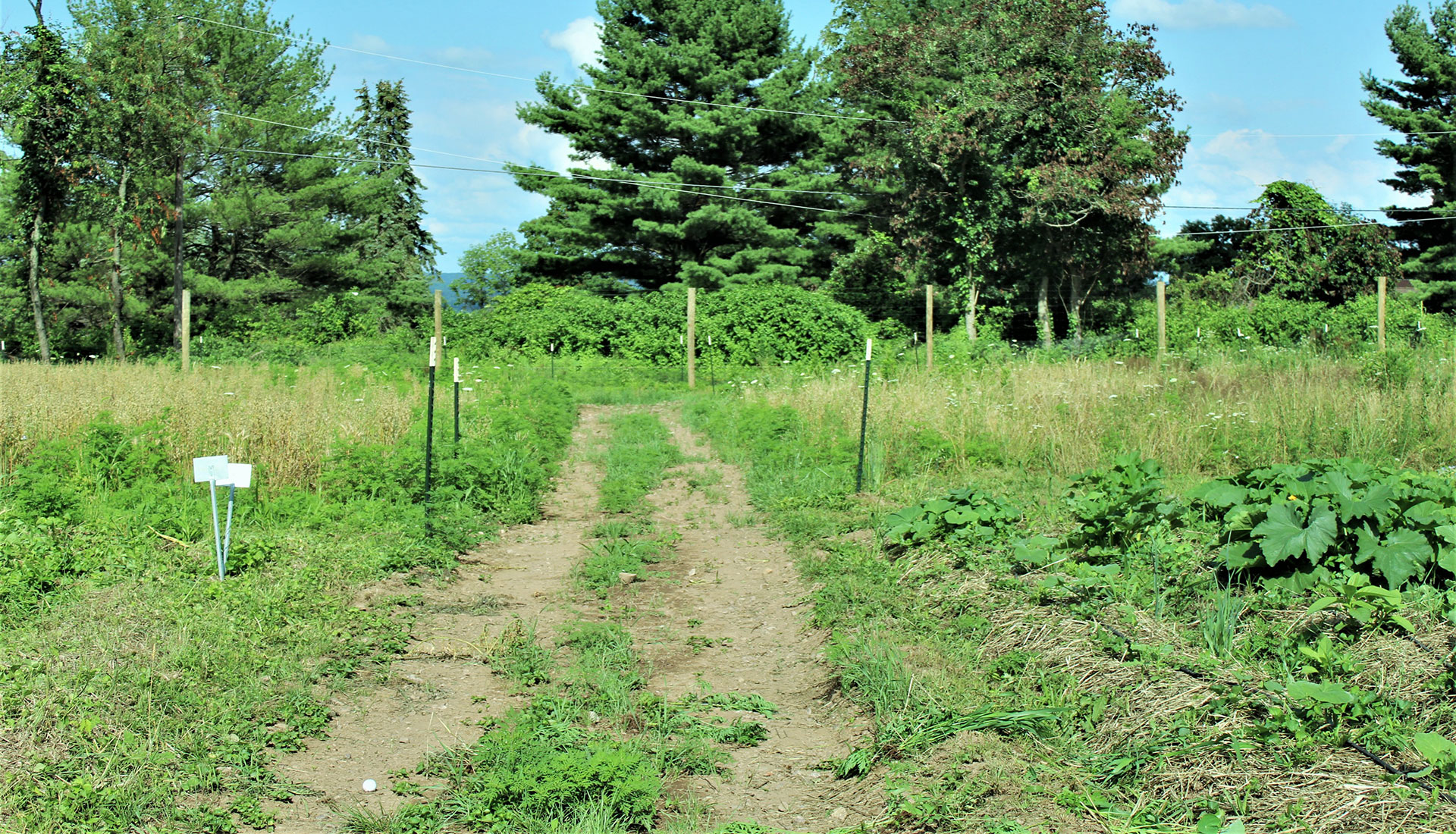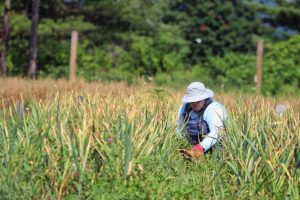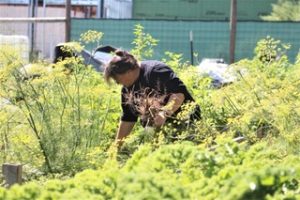Here in Zone 6b we plant our garlic in the fall then spend a lot of time helping it thrive in the spring. After the dormant winter period, the bulb will grow during the spring. It’s important to make sure you have the correct soil and garden conditions to get large, healthy bulbs.
Soil health starts with soil testing. A soil test will let you know the pH of your soil and what nutrients it may be lacking. After a soil test, you can appropriately amend your soil. This will to create a fertile environment for the garlic. Then, once the garlic is planted, you need to take care of your beds. Make sure the garlic has ample water and no weed competition. It’s not a hands-off process, but the resulting home-grown garlic is worth the effort.
Here are some of our top tips for creating the perfect environment for your garlic plants!
Neutral Soil is Best for Garlic
Garlic grows best in neutral soil with a pH between 6.5 and 7.0. This level of acidity allows for optimal nutrient availability for the garlic.
Soil acidity is affected by many different factors. The parent materials of the soil, the quality of rainfall, the decomposition of organic material such as leaves and dead plants, and the use of fertilizer can all impact the pH of the soil. A soil test is necessary to assess soil acidity and
determine your course of action.

You can add lime or wood ashes to increase your soil pH. To lower the soil pH, you can add
sulfur or aluminum sulfate. In either case, plan to do so several months before planting. This will allow you to to avoid harming you
r plants and give your soil pH time to adjust.
You will need to mix the amendments into the soil to a depth of 6-8 inches with a shovel, rake, or tiller. Mix before before planting so that it doesn’t disrupt your plants and root systems.
If you realize in the spring that your pH is too low, you can add baking soda mixed with water to the soil. This approach is more gentle and won’t harm the plants as long as their root systems stay intact.
Ideally adjusting soil pH happens in the fall, not the spring. But it’s still a necessary step to enjoying a successful garlic growing season in the spring.
Garlic Needs Lots of Nitrogen
Garlic needs lots of nutrients, especially nitrogen, to grow well in the spring. The nitrogen enables the garlic plants to grow lots of leaves, which lead to big bulbs.
Add a nitrogen-rich fertilizer to the beds multiple times in the spring. Apply the first layer as soon as the shoots emerge. Then, apply a second layer towards the end of April. Stop adding nitrogen after the beginning of May to allow the plants to bulb well.
Blood meal, chicken manure, and synthetic fertilizers are all good sources of nitrogen for your garlic plants.
Keep Soil Moist and Weed Free for Happy Garlic
Garlic is a particular plant. It needs specific amounts of moisture and space to thrive.
Garlic grows best in soil with good drainage that gets about an inch of water a week. If you’re getting adequate rainfall, don’t water the garlic. But, if you aren’t, make sure to water it regularly up until about June. Too much watering at the end of the growing season or wet soil due to bad drainage can cause the bulbs to rot.
Garlic is not a very competitive plant and needs a weed-free space to grow properly. Leaving mulch cover around the plants can help prevent weed growth. Additionally, it’s best to start weeding early and maintain the habit. The less weeds, the better your garlic harvest will be.
Spring is a critical season for growing garlic. Your plants need a weed-free environment with nitrogen-rich, neutral soil to thrive. Catch problems early by keeping a close eye on your plants, adding fertilizer as needed, and maintaining a steady weeding schedule. Happy garlic means an abundant harvest and delicious meals for the rest of the year!



